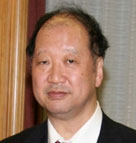This new, non-invasive method was developed by Animo under the supervision of Prof. Kimitaka Kaga, an authority in the area of otorhinolaringology.
(*1) Pending patent
Main Features
1. Non-invasive method
The occurrence of snoring during sleep can be detected by the user him(her)self (3 hours of recording at home) using his or her smartphone, in a completely non-invasive way.
2. Recording the initial sleeping sound
Snoring is known to happen at the beginning of the sleeping. In this service, the user starts recording before getting asleep, and the recording continues for 3 hours. Thanks to our proprietary analysis technology, the recorded sound is stored in the smartphone while the parameters extracted from the snoring are sent to a server. The cloud-based server takes care of detailed snoring detection and data storage.
3. Displaying peculiar snoring intervals
Snoring intervals exhibiting particular features are displayed and can be played back.
4. Daily conditions memo
A feature permits registering sleeping hours, health conditions, and whether or not the user drank alcohol before going to bed, which is a useful feature for controlling the user’s health.
Service Specifications
| Way of deployment | Smartphone application Accessed from NTT docomo’s sp-mode® menu site |
iPhone Application |
|---|---|---|
| How to access |  Service only in Japan. Service only in Japan. |
Search “ZooZii” on App Store |
| Supported devices | Android smartphones *Detailed information related to supported devices can be found in the site |
iPhone |
Example of Service Screen
① TOP Screen
 The days when the Snoring Check was performed and the respective results can be viewed at a glance. To see detailed results, tap on “See Results” and the “Results” screen is shown.
The days when the Snoring Check was performed and the respective results can be viewed at a glance. To see detailed results, tap on “See Results” and the “Results” screen is shown.
② Recording Screen
 Tapping on “Record” starts recording, which lasts for 3 hours.
Tapping on “Record” starts recording, which lasts for 3 hours.With the daily conditions memo feature, one can register information such as level of fatigue, amount of exercise, volume of alcoholic beverage, etc.
③ Results Screen

- ◆Graph
- The volume of 3 hours of recorded sound is displayed in a graph. The level shown in the graph represents volume, but that includes others sounds in addition to snoring.
Intervals shown in orange in the graph are those classified as snoring, and the exclamation marks (!) indicate those intervals that deserve further attention (up to 5 intervals are shown). - ◆Snoring Time Ratio
- Indicates the ratio of time detected as “Snoring” by the analysis.
- ◆Number of Snoring Interruptions
- Indicates the number of short interruptions (up to 1 minute) that occurred amidst those periods classified as “Snoring” by the analysis.
Prof. Kimitaka Kaga’s Profile
 |
Born in Hokkaido | |
| 1971 | Graduated from the University of Tokyo, School of Medicine, Joined University of Tokyo Hospital, Otolaryngology |
|
| 1983~1985 | Jefferson Medical College, UCLA Brain Research Institute | |
| 1992 | Professor, Department of Otolaryngology, University of Tokyo, School of Medicine |
|
| 2000 | Director, Center for Research on International Cooperation in Medical Education, University of Tokyo |
|
| 2004 | Chairman, Japan Society of Ear | |
| 2007 | Professor Emeritus, University of Tokyo Director, Tokyo Medical Center Clinical Research Center (sensory organs) |
|
